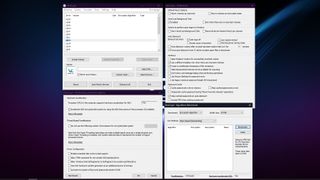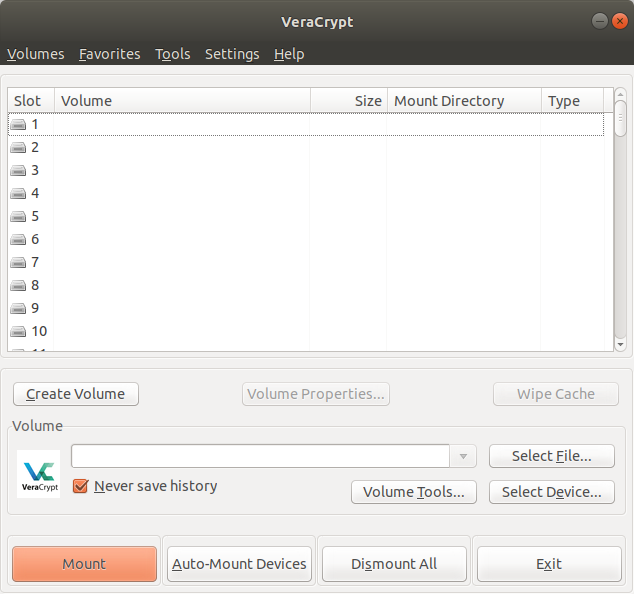

Otherwise, an attacker could decrypt your system partition/drive using the old password (if he finds the old VeraCrypt Rescue Disk and uses it to restore the key data). Therefore, whenever you change the password, you should destroy your VeraCrypt Rescue Disk and create a new one (select By doing so, you also restore the password that was valid when the VeraCrypt WARNING: Your VeraCrypt Rescue Disk allows you to restore key data if it is damaged.

System -> Change PasswordĬhanges the password used for pre-boot authentication (see the chapter System Encryption). Favorites -> Add Mounted Volume to System Favorites Favorites -> Organize System Favorite Volumes Favorites -> Add Mounted Volume to Favorites Favorites -> Organize Favorite Volumes Favorites -> Mount Favorites Volumes Volumes -> Add/Remove Keyfiles to/from Volume Volumes -> Remove All Keyfiles from Volume Header Key Derivation, Salt, and Iteration Count. Therefore, the data stored on the volume will not be lost after you use this function.

Note that the volume header contains the master encryption key with which This function allows you to re-encrypt a volume header with a header key derived using a different PRF function (for example, instead of HMAC-RIPEMD-160 you could use HMAC-Whirlpool). Volumes -> Set Header Key Derivation Algorithm Note: When VeraCrypt re-encrypts a volume header, the original volume header is first overwritten many times (3, 7, 35 or 256 depending on the user choice) with random data to prevent adversaries from using techniques such as magnetic force microscopy or magneticįorce scanning tunneling microscopy to recover the overwritten header (however, see also the chapter Header Key Derivation, Salt, and Iteration Count) and in generating the new salt (for more information, see the section In this field you can select the algorithm that will be used in deriving new volume header keys (for more information, see the section See also the chapter Security Requirements and Precautions.
#Veracrypt documentation pdf how to#
Note: For information on how to change a password used for pre-boot authentication, please see the section Volumes menu select Change Volume Password. To change a VeraCrypt volume password, click on Select File or Select Device, then select the volume, and from the Not be lost after you use this function (password change will only take a few seconds). Therefore, the data stored on the volume will Note that the volume header contains the master encryption key with which the volume is encrypted. This functionĪ header encryption key derived from a new password. Only the header key and the secondary header key (XTS mode) are changed – the master key remains unchanged. Volumes -> Change Volume PasswordĪllows changing the password of the currently selected VeraCrypt volume (no matter whether the volume is hidden or standard). Volumes -> Auto-Mount All Device-Hosted Volumes Note: To save space, only the menu items that are not self-explanatory are described in this documentation.


 0 kommentar(er)
0 kommentar(er)
